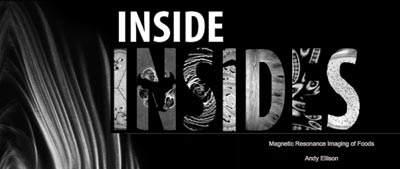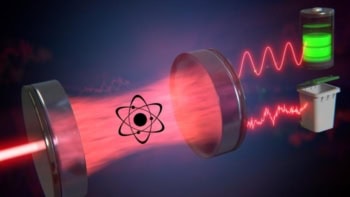Inside Insides
URL: http://insideinsides.blogspot.co.uk

So what is the site about?
For some of us, the beauty of the natural world is revealed through elegant equations. For others, a photo of the Milky Way or the Horsehead Nebula does the trick. But for Andy Ellison, it’s all about MRI scans of fruits and vegetables. And once you’ve leafed through the fruits of his labours, we think you’ll agree he has a point. Ellison, an MRI technician at Boston University Medical School in the US, began by filling his blog Inside Insides with a series of short films (animated GIFs, to be precise) depicting successive “slices” of various items from the supermarket produce aisle. Lately, he has been branching out to include flowers and other non-edible plants in his singular oeuvre. The results are fun, beautiful and sometimes surprising. Who knew that cross-sections of a pumpkin tree flower looked so much like slices of a human brain?
How lovely. But aren’t there more…well…useful applications for MRI machines?
Ellison takes all his images during the MRI machine’s “down time” – for example, during calibration tests or warm-up runs. No human patients were harmed or had their treatments delayed by the making of this website.
What are some highlights?
Among the original fruit-and-veg scans, the artichoke is a stand-out favourite. A few of the cross-sections look rather like the Bohr model of the atom, and all those fleshy outer lobes show up wonderfully well in the scanner (pitted fruits like peaches and plums, which lack such structures, look rather dull in comparison). Also, in mid-2012 Ellison began adding 3D versions of his fruit-and-veg scans to the site. Created by the medical-visualization masters at TheVisualMD, these colour renderings enable viewers to toggle between top and side views and to “pause” the image sequence at a desired point. This is a great feature, and the scan of a bell pepper shows why: the pepper Ellison picked for his scan happened to contain a smaller, less-developed mini-pepper growing inside it, and in the 3D interactive version it is possible to see the details of this “baby” pepper much better.
Why should I visit?
It’s a safe bet that images of broccoli florets exploding like fireworks weren’t what Paul Lauterbur and Peter Mansfield had in mind when they developed the techniques that would transform magnetic resonance imaging into a widely used medical diagnostic tool. (The various studies of people having sex in an MRI machine didn’t exactly feature in their 2003 Nobel prize lectures either.) But one of the great things about scientific discoveries is that you never know what they might get used for further down the line – and that goes for beautiful applications such as laser light shows and MRI vegetable videos, as well as useful ones such as eye surgery and cancer detection. Simply put, browsing through Inside Insides is great fun. Your five-a-day have never looked so fascinating.



